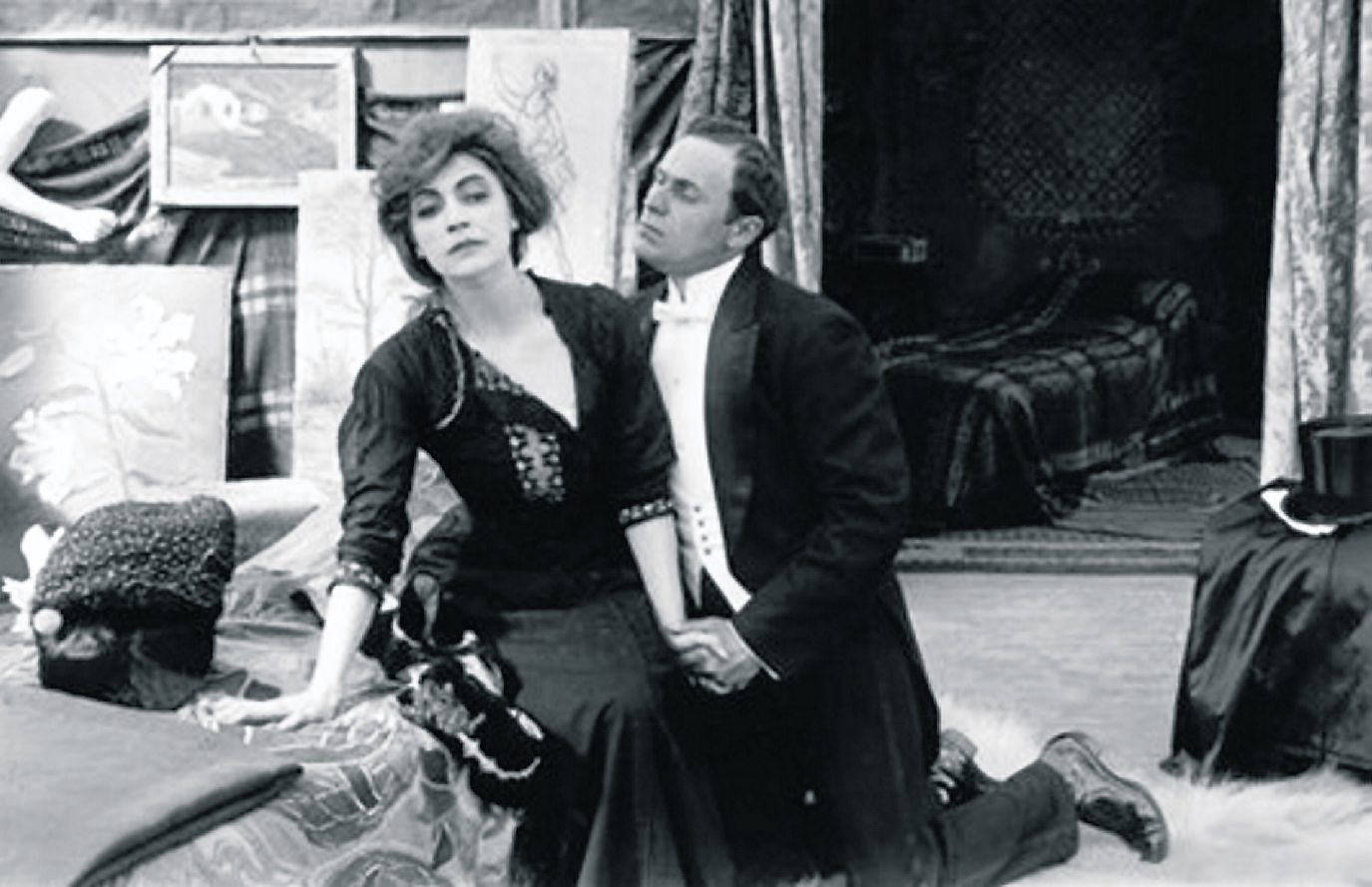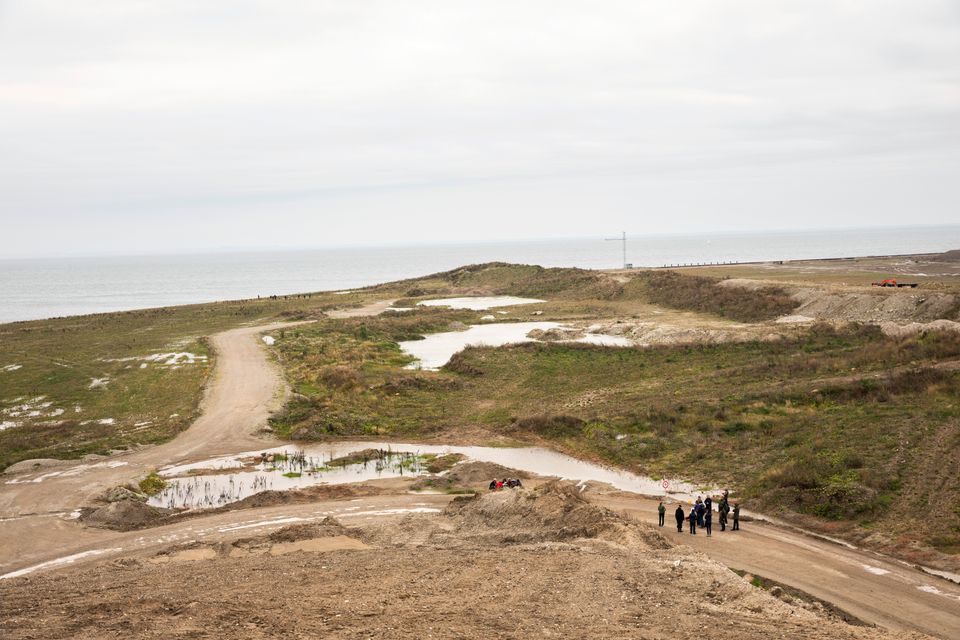In the relatively young and rapidly changing art-form we call cinema, many of its early triumphs are fast becoming forgotten. One could be forgiven for not knowing that the Copenhagen-based Nordisk Film is the world’s oldest still-functioning film studio and that, a century ago, its most bankable star was in fact the biggest name in the business and one of the most beloved screen actors in the world.
After his debut in a minor role in a small-scale adaptation of Oscar Wilde’s ‘Picture of Dorian Gray’ (1910, Axel Strøm, no prints remain), Valdemar Psilander entered the public consciousness in 1911, heralding a golden age for Danish cinema. Nordisk Film had become a public company, establishing itself as the nation’s dominant production house.
It was also building a solid reputation overseas, particularly in Germany, where it would soon establish several branches, but also as far-flung as Russia and the US. Psilander’s first film at Nordisk was ‘Ved Fængslets Port − At The Prison Gate’ (‘Temptations Of A Great City’). Directed by August Blom, Nordisk’s star director at the time, the film concerned a rich stateswoman whose son (Psilander) falls for Anna, the daughter of a lowly money-lender.
Nordic Film stalwart
The stateswoman disapproves of the relationship and so, now disowned, the son and his beloved move away together. However, unable to acclimatise himself to a more modest lifestyle, the son continues to live lavishly but utterly beyond his means. Before long, he’s borrowing more and more money from Anna’s father. Unable to repay him, he considers suicide before eventually forging a cheque in his mother’s name … This character became the blueprint for Psilander’s roles: a vulnerable but heroic romantic with frustrated morals.
Essentially belonging to the genre of ‘erotic melodrama’, the film’s three themes of blind love, monetary greed and suicide could easily be applied to his own life. Between 1911 and 1917, Psilander performed in no less than 83 productions for Nordisk Film.
With global hits such as ‘A Revolutionary Wedding’ (‘Revolutionsbryllup’, August Blom, 1915), ‘The Black Dream’ (‘Den Sorte Drøm’, Urban Gad, 1911) and ‘The Clown’ (‘Klovnen’, AW Sandberg, 1917), which is widely considered to be his best role, he became the highest paid actor of his generation, earning an annual salary of 100,000 kroner (the second highest paid Danish actor was Olaf Føns, who earned just 14,000 kroner). Then, in March 1917, at the apex of his career, he was found dead in his room at the Bristol Hotel. He was just 32 years old.
Silent appeal
Psilander’s appeal can be attributed to two factors, the first of which was timing. Silent cinema was unique in that a film or an actor could attract a global audience unhindered by the language barrier. His films could command huge audiences anywhere, while contemporary categorisations such as ‘foreign language’ or ‘art-house’ had yet to be implemented.
The second factor was that he was actually very good. Watching even one of his earliest works such as ‘Den Sorte Drøm’ (1911), it’s easy to see how his style contrasts with the other performers he shares the screen with. His gestures are naturalistic, uninflected and less considered than those around him.
It’s clear he had an innate intuition how to act before the camera at a time when many around him were transitioning from the stage, still performing for the benefit of the cheap seats.
15 and on stage
In one of his very few interviews, given to København Avis in 1913, Psilander spoke admirably about his process. “We so often see fine stage actors become nothing on film because they don’t understand that it depends upon concentration,” he said.
“The interesting thing about film is that we play to all social classes and in all parts of the world. We must in our means of expression appear nearly primitively genuine, truly original. One can perhaps learn to become an actor, but you can never learn to be filmed. Studied emotions on film become artificial and false. Film relentlessly demands truthfulness and sincerity.”
Psilander’s early life saw him work (after school) for a wine-seller, but it wasn’t long before he made attempts to become an actor. This of course was not in film but on stage − at 15 years old, he joined the Casino Theatre as an apprentice and began to audition around the wider Copenhagen theatre scene.
Love in Frederiksberg
He succeeded in performing regularly at the Dagmar and Frederiksberg theatres between 1907 and 1909 but, perhaps ironically given the above quote, nothing of his performances are noted and they apparently earned him little attention.
It was during these early days that Psilander met and fell deeply in love with the actress Edith Josephine Buemann, despite her being married to journalist Hans Obbekjær. They met whilst at the Frederiksberg Theatre performing Holger Drachmann’s ‘Det Grønne Håb’ (‘The Green Hope’) and shortly after performed together in ‘Oliver Twist’.
At this time, Psilander was much less known than she was. They got married at Frederiksberg Church, shortly after his break-out success at Nordisk Film, in December 1911. They remained together for some time, and Psilander became stepfather to Edith’s son Sven from her previous marriage. But they grew estranged as time went on, eventually separating shortly before his death in 1917.
Early final curtain
The nature of Psilander’s demise is a matter of some controversy. For many, it is a forgone conclusion that the actor, despite enjoying unprecedented success at the global box office, had taken his own life. It might have had something to do with his recent split from his wife, or possibly a heated disagreement with Nordisk Film following Psilander’s request for a dramatic 150,000 kroner rise in his salary. That request was deemed to be unreasonable and promptly declined by managing director Ole Olsen. Psilander consequently left Nordisk Film and set about forming his own production studio, Psilander-Film.
Others insist that suicide was highly unlikely. Psilander’s death certificate indicates a cardiac arrest. In 1966, Edith Buemann, by that time twice remarried, claimed that at the time of his death, Psilander was taking prescription drugs that his doctor had warned would prove to be fatal should he consume them alongside alcohol − advice which, she claims, the actor had ignored. A more outrageous claim suggests he was shot by an obsessed Russian lover who, having travelled from St Petersburg to Valby, found her idol in the arms of another woman.
All we can be certain of is that Denmark, and cinema the world over, had lost one of its greatest stars − at the very moment he burned brightest.














